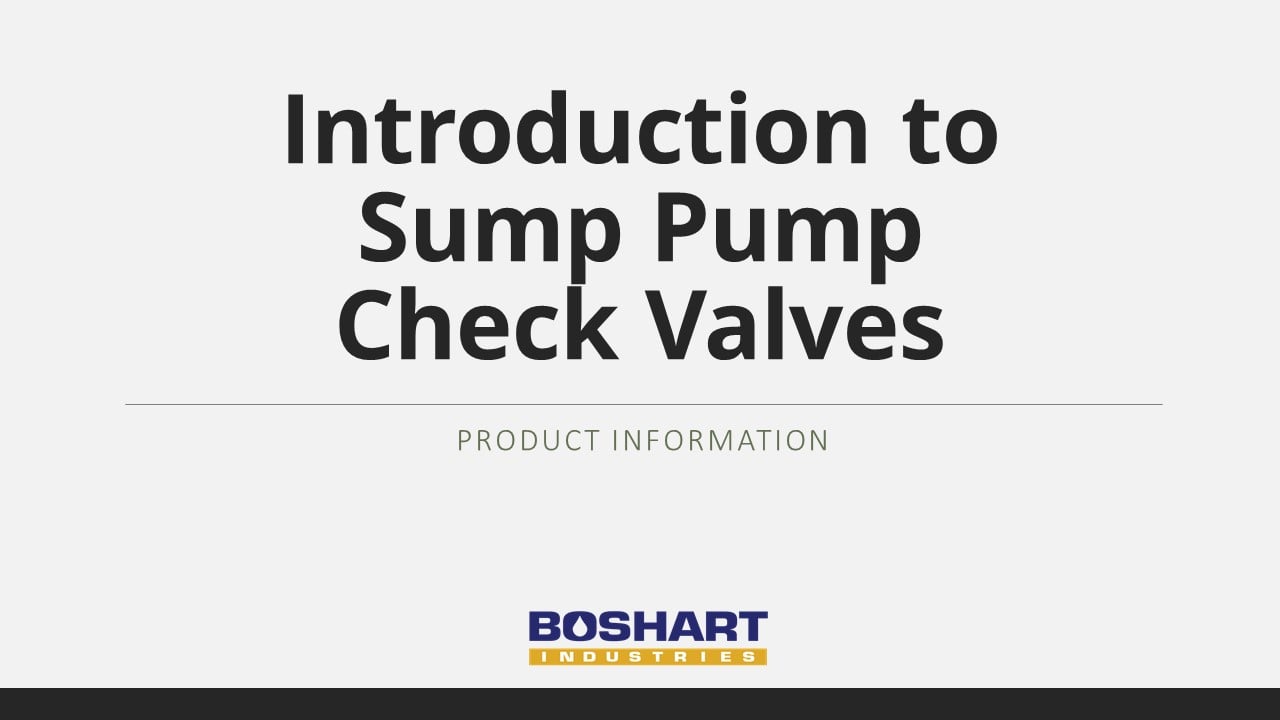Throughout this post, we will discover exactly what a check valve and foot valve are and why they are so critical. You may have come across check valves being called non-return valves or one-way valves, to keep it simple, in this post we will be referring to them as check valves.
The flow of fluid (either liquid or gas) in a check and foot valve is only able to travel through the valve in one direction. As pressure on the inlet side of the valve increases, such as a pump starting, the valve opens. When that pressure stops, the pump stops, the valve then closes and prevents the flow from switching directions. This process is automatic and doesn't require assistance.
Different Types
Spring Type
In spring type check and foot valves a poppet is held in place using a spring. Pressure on the inlet side of the valve forces the poppet to open and the spring to contract. When that pressure subsides the spring forces the poppet back to the closed position. These can be installed both vertically and horizontally.
Flapper Type
The flapper type check & foot valves work using gravity. They use a disk and rubber or leather flapper attached at one side of the opening. Pressure on the inlet side forces the disk and flapper open and gravity, plus the weight of the fluid above the flapper, force it closed. These are generally installed vertically but can be installed horizontally as long as the flapper closes down.
Ball Type
This type is only found in check valves. Instead of using a spring or flapper they use a ball to prevent the flow from changing direction. More about them can be found in our post on ball check valves vs backwater valves.
Check Valve
 Check valves typically have NPT (National Pipe Thread) connections on both sides of the body. They are installed right into the piping of a system. Check valves are typically simple to use and install and are generally inexpensive. You can find check valves in bronze, brass, stainless, ductile iron or plastic.
Check valves typically have NPT (National Pipe Thread) connections on both sides of the body. They are installed right into the piping of a system. Check valves are typically simple to use and install and are generally inexpensive. You can find check valves in bronze, brass, stainless, ductile iron or plastic.
An advantage of installing a check valve is it extends the efficiency and life of a pump.
Foot Valve
 Foot valves typically have an NPT connection on the outlet side and a strainer on the inlet side. The addition of the strainer prevents large pieces of debris from clogging the foot valve while it's in the open position, also avoiding damage to the water pump.
Foot valves typically have an NPT connection on the outlet side and a strainer on the inlet side. The addition of the strainer prevents large pieces of debris from clogging the foot valve while it's in the open position, also avoiding damage to the water pump.
Foot valves are used in shallow well jet pump and deep well jet pump installations. The foot valve is required to be installed at the bottom of the well suction line piping. Similar to the check valve, the foot valve prevents water from flowing back out of the jet pump. This protects against loss of prime in the well piping system. If you notice that a shallow well no longer has any water, one of the first things to check would be if the foot valve needs to be replaced.
An advantage of installing a foot valve is it ensures the pump doesn't loose its prime.
Pro Tip: Check & foot valves have arrows on them indicating the direction of flow, make sure that they are installed with the arrows in the right direction.
Terms to Understand
Cracking Pressure
Cracking pressure is the minimum upstream pressure that will allow the valve to open. It is important for both the check valve and foot valve. Generally, the valves are designed for a specific cracking pressure so being aware of what the cracking pressure is on the valve you are requiring is important.
Water Hammer
When water is flowing through a piping system, the water has a certain amount of energy. Once the pumping is stopped, the water continues to move, still having the same energy that will need to be absorbed in some way. The absorption of the energy can create a loud noise or damage which is called water hammer.
Water hammer could destroy your piping system or valves. The intensity of the water hammer varies depending on the velocity that the water is traveling when the pump stops. It is important to keep water hammer in mind when sizing the system and deciding what material the valve should be.
A good rule of thumb is for every foot per second of velocity, 54 PSI of back pressure is created. For example, in a 1" pipe, a flow of only 10 GPM could potentially create a back pressure of up to 370 PSI when the pump stops. Keep in mind, this does not consider the weight of the water column in the well.
Check and foot valves are designed to help reduce the damaging effects of water hammer on piping and other equipment.
Although check and foot valves are simple products, they make a big impact. Not installing a check or foot valve could cause significant damage to your pump due to water hammer, guaranteeing you a costly repair. Don't take the chance, install a check or foot valve. As simple as that.
Have further questions about this subject?

Head over to Boshart's Knowledge Base: technical product information, guidelines, and more.


.png)


SHARE